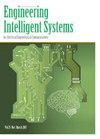A model-based system for the classification and analysis of materials
Engineering Intelligent Systems for Electrical Engineering and Communications
Pub Date : 1993-12-01
DOI:10.1049/ISE.1993.0014
引用次数: 12
Abstract
To build model-based systems capable of emulating the scientist's or engineer's way of reasoning about a given physical domain requires methods for automating the formulation or selection of a model which adequately captures the knowledge needed for solving a specific problem. To find and exploit such models requires the use and integration of different kinds of knowledge, formalisms and methods. This paper describes a system which aims at reasoning automatically about visco-elastic materials from a mechanical point of view. It integrates both domain-specific and domain-independent knowledge in order to classify and analyse the mechanical behaviour of materials. The classification task is based on qualitative knowledge, whereas the analysis of a material is performed at a quantitative level and is based on numerical simulation. The key ideas of the work are to automatically generate a library of models of ideal materials and their corresponding qualitative responses to standard experiments; to classify an actual material by selecting from within the library a class of models whose simulated qualitative behaviours towards standard loads match the observed behaviours; to identify a quantitative model of the material, and then to analyse the material by simulating its behaviour on any load. Each model in the library is automatically generated in two different forms; at the lowest level, as a symbolic description and, at a mathematical level, as an ordinary differential equation. This paper mainly concentrates on the methods and algorithms of model generation and qualitative simulation. >基于模型的材料分类和分析系统
为了建立基于模型的系统,能够模仿科学家或工程师对给定物理领域的推理方式,需要有方法自动制定或选择模型,以充分捕获解决特定问题所需的知识。要发现和开发这样的模型,需要使用和整合不同种类的知识、形式和方法。本文介绍了一个从力学角度对粘弹性材料进行自动推理的系统。它整合了特定领域和独立领域的知识,以便对材料的机械行为进行分类和分析。分类任务是基于定性知识,而材料的分析是在定量水平上进行的,并且是基于数值模拟的。该工作的核心思想是自动生成理想材料的模型库及其对标准实验的相应定性反应;通过从库中选择一类模型对实际材料进行分类,这些模型对标准载荷的模拟定性行为与观察到的行为相匹配;确定材料的定量模型,然后通过模拟材料在任何载荷下的行为来分析材料。库中的每个模型都以两种不同的形式自动生成;在最低层次上,作为一个符号描述,在数学层次上,作为一个常微分方程。本文主要研究了模型生成和定性仿真的方法和算法。>
本文章由计算机程序翻译,如有差异,请以英文原文为准。
求助全文
约1分钟内获得全文
求助全文

 求助内容:
求助内容: 应助结果提醒方式:
应助结果提醒方式:


